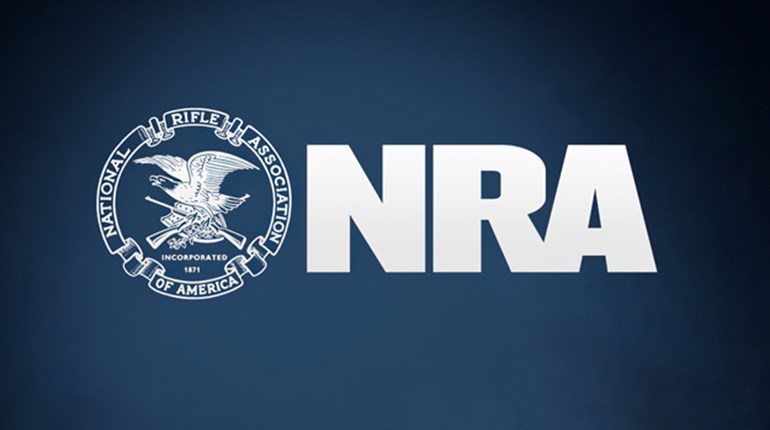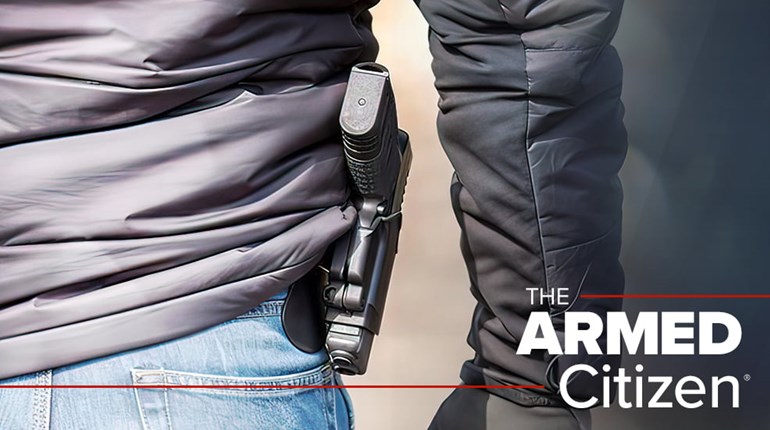
We are living in extraordinary times, and it will take an extraordinary effort by freedom-loving Americans during this year’s presidential election to emerge with our liberties intact. The candidates could not be further apart in how they view your fundamental right to protect yourself and your loved ones. Regardless of party affiliation, if you value the right to keep and bear arms and wish to preserve it for this and future generations, you must vote to re-elect President Donald J. Trump in November.
I explained last month why the election of Joe Biden would be a disaster for gun owners and would cripple the Second Amendment as we know it. That alone makes the choice easy.
But for his part, President Trump has earned the gun vote by keeping his promises to America’s firearm owners and by proving time after time that he is a stalwart and trusted ally to Second Amendment supporters.
Gun owners will remember that 2016’s presidential election was largely a referendum on who would choose the successor to U.S. Supreme Court Justice Antonin Scalia, author of the landmark 2008 opinion in District of Columbia v. Heller. Scalia used text, history and tradition to establish as a matter of law what was already common knowledge to most Americans: the Second Amendment protects an individual right to keep and bear arms, independent of service in an organized militia. Justice Scalia’s decision led to the end of handgun bans in the District of Columbia and Chicago. It also signaled that the Second Amendment must be afforded the same respect as other individual liberties protected by the Bill of Rights.
Gun prohibitionists reacted with fury and have been trying to undermine and reverse Heller’s individual-rights holding ever since. They may well have succeeded, had the Senate confirmed Barack Obama’s choice to fill Scalia’s vacant seat on the court. That nominee, Judge Merrick Garland of the U.S. Court of Appeals for the D.C. Circuit, had voted to rehear the lower court decision that would eventually become the Heller case before the Supreme Court. Garland manifestly believed the full D.C. Circuit needed another crack at interpreting the Second Amendment, after a three-judge panel issued an opinion holding that D.C.’s handgun ban violated the Second Amendment’s individual right to keep and bear arms.
Donald Trump made appointing a worthier successor to Scalia’s legacy a keystone of his presidential platform. He even published a list of potential Supreme Court nominees during his campaign, so voters could see for themselves what sorts of judges Trump would appoint to the nation’s highest court. The common denominator among these judges (besides impeccable professional credentials) was a demonstrated respect for America’s constitutional order, legal traditions and Second Amendment.
Most had also adopted Scalia’s signature “originalist” style of constitutional interpretation, which limits judicial policy-making by deferring to the meaning of constitutional language as it was understood at the time of its adoption. This ensures permanence and stability for the nation’s founding principles, unlike the contrary practice of simply declaring constitutional precepts out of thin air to suit the judge’s preferred politics and to keep up with the elite trends of the day, whatever they happen to be.
Gun owners understood the stakes in 2016 and voted for Donald Trump in droves. After his election, President Trump kept his most important promise by nominating Judge Neil M. Gorsuch, then of the U.S. Court of Appeals for the Tenth Circuit, to ascend to Scalia’s vacant seat on the U.S. Supreme Court. Gorsuch, in contrast to Garland, had demonstrated his respect for the Second Amendment, writing in one case that the “Second Amendment protects an individual’s right to own firearms and may not be infringed lightly.” Like Scalia, Gorsuch also emphasized textualism and originalism in his approach to constitutional interpretation.
President Trump had another opportunity to appoint a Supreme Court justice with the retirement of Justice Anthony Kennedy in 2018. Kennedy was widely recognized as the critical swing vote in Heller and the follow-up case of McDonald v. City of Chicago. Yet he was also typically characterized as a centrist, and it wasn’t clear how far his support for the Second Amendment extended. Many believe the reason the Supreme Court remained silent on the Second Amendment in the years after Heller and McDonald was that neither the evenly divided pro- and anti-gun wings of the court had confidence that Kennedy would vote their way.
Trump’s choice to succeed Kennedy was Brett M. Kavanaugh, then of the U.S. Court of Appeals for the D.C. Circuit. Kavanaugh had one of the strongest records on the Second Amendment of any potential nominee, having penned a lengthy and well-reasoned dissent from a case that upheld various aspects of D.C.’s onerous post-Heller gun control regime. It was clear he would take the Second Amendment seriously if elevated to the high court.
In judicial appointments and many other ways, President Trump has unapologetically supported the Second Amendment.
Speaking of the lower courts, President Trump has been busy there as well, in June reaching the milestone of 200 judicial appointments. Only a tiny fraction of cases ever reach the U.S. Supreme Court. The decisions that affect Americans’ lives and liberties—including the right to keep and bear arms—will mostly be rendered by judges at the district and circuit court levels. President Trump recognizes this and has made an investment in the judiciary that will pay dividends for gun owners for decades to come. Even Trump’s detractors recognize that his reshaping of the federal judiciary will be his most important and lasting legacy.
Yet President Trump’s support for the Second Amendment goes well beyond his judicial appointments. Shortly after taking office, he wasted no time repealing an Obama-era scheme that forced Social Security recipients to choose between their benefits and their Second Amendment right to possess a firearm. President Trump made sure that Americans’ rights should never be the subject of such a false choice.
During his 2016 campaign, Trump promised to abolish so-called “gun-free zones” that empower criminals and disarm the law-abiding. He did exactly that in April, initiating a rulemaking to end a ban on the possession of firearms in water resource development projects administered by the Army Corps of Engineers (ACE). These areas comprise one of the largest networks of outdoor recreation sites in America, encompassing more than 400 lake and river projects in 43 states. Visitors use these sites for hiking, boating, fishing, camping, hunting and geo-caching. Yet carrying firearms for self-defense in these areas is prohibited.
The proposed rule would abolish an existing “gun-free zone” on 12 million acres of public lands and waters nationwide, including 55,390 miles of shoreline, 7,856 miles of trails, 92,588 campsites and 3,754 boat ramps. It is set to be one of the single largest expansions of the right to carry in the nation’s history.
The Trump administration also reformed America’s antiquated system for regulating exports of firearms and ammunition in a way that benefited both individual gun owners and the lawful industries that support them. Among other things, this move reversed Obama-era polices that wreaked havoc with gunsmiths and gunsmithing schools, as well as with hunters traveling abroad with personally owned firearms and ammunition.
During the early stages of the COVID-19 pandemic, when many state governments were poised to use the novel virus as a means to restrict Second Amendment rights, President Trump’s administration identified the firearms industry as “critical infrastructure,” forcing all but a few states to keep gun stores and other firearm businesses open. In doing so, President Trump made clear that the self-defense rights of law-abiding Americans are and forever will be “essential.”
And, who could forget the historic moment when President Trump “unsigned” the Arms Trade Treaty on stage at our 2018 Annual Meeting. His leadership freed the U.S. from a terrible treaty that could have imposed restrictive international gun control on American gun owners.
The president additionally used his authority to increase access to public lands for the use of hunters and sport shooters, both through executive orders and by signing federal legislation to that helps states provide more shooting ranges on public lands.
More so than any of his predecessors, President Trump has unapologetically supported the Second Amendment, even when “elite” opinion has railed against it.
President Trump understands that despite what these so-called “elites” claim, nothing is more important than the fundamental freedoms we enjoy as Americans. That’s why I’ve whole-heartedly endorsed him in my role as Chairman of NRA-PVF, and why I look forward to casting my ballot to help re-elect him on November 3. I invite you to join me by doing the same.


































